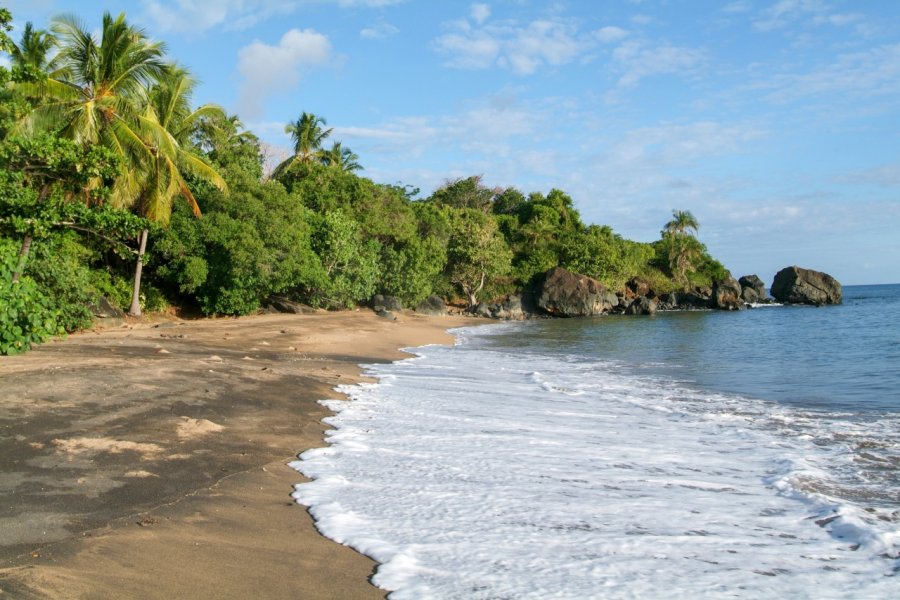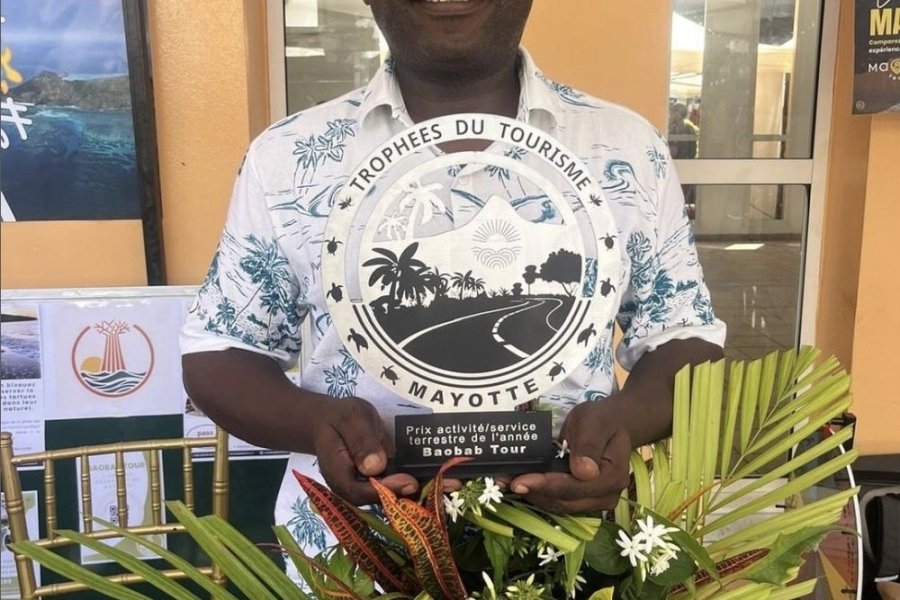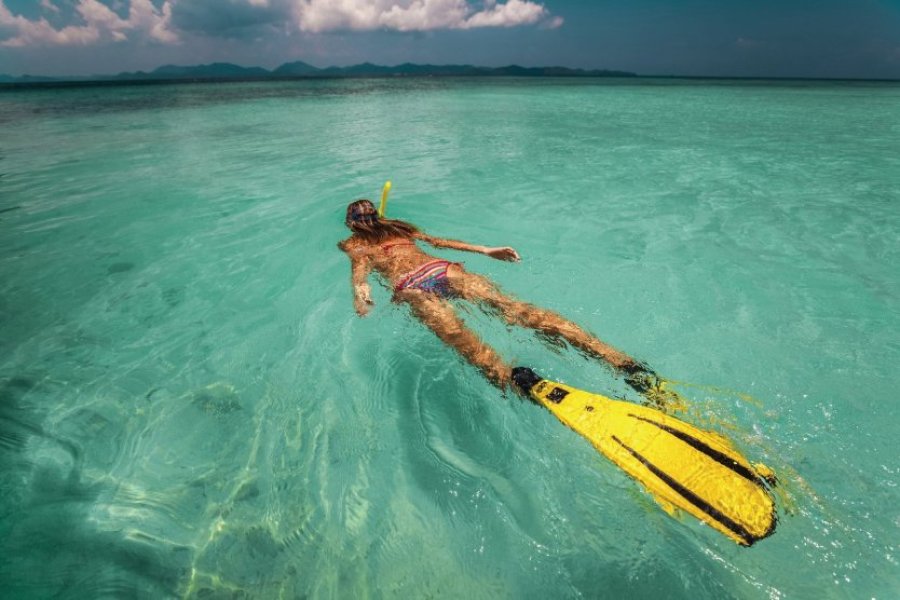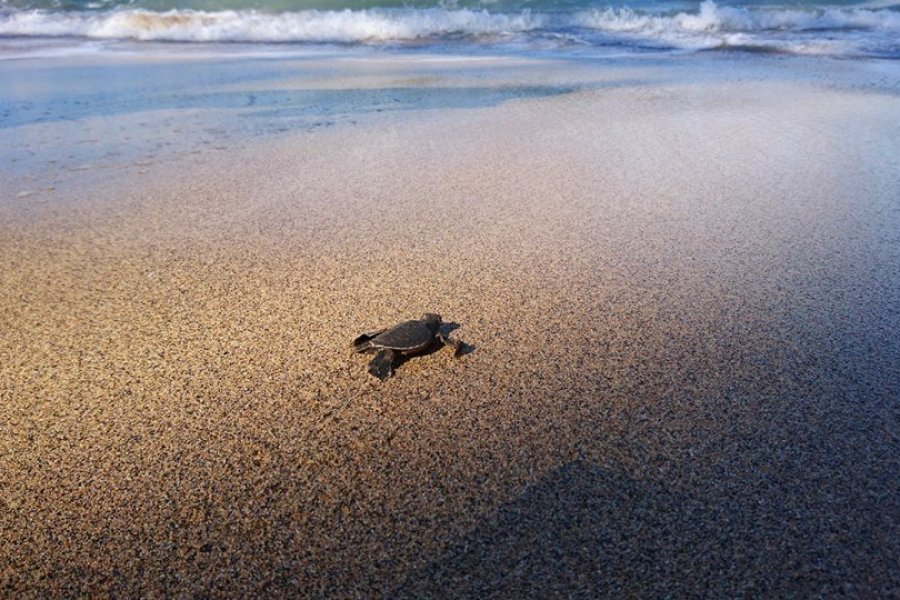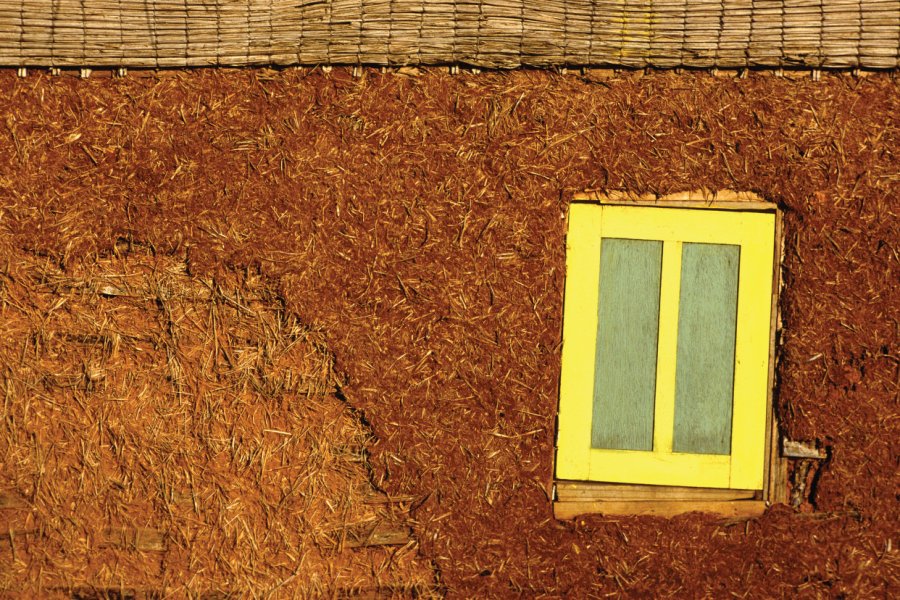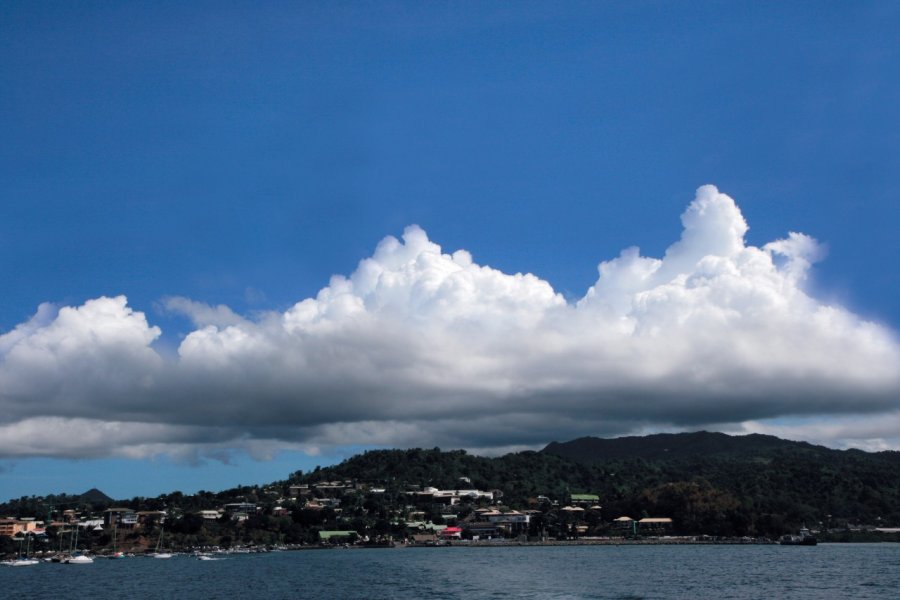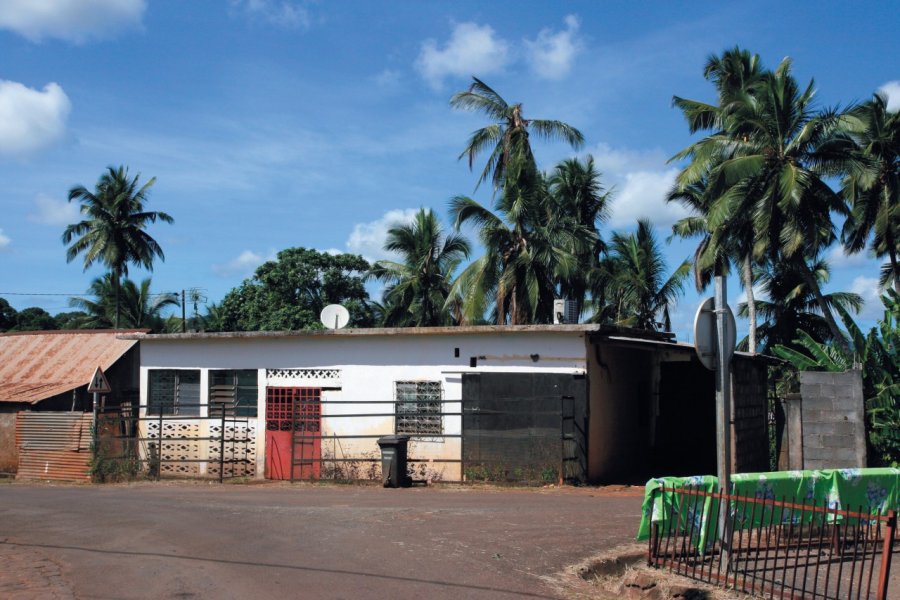Travel guide Mayotte
Still too little known, Mayotte is a little treasure for seabed enthusiasts. And for good reason, the island has not one, but two coral reefs, forming a calm and warm lagoon throughout the year. A particularity that has of course not escaped the whales, whale sharks, turtles, dugongs, manta rays and dolphins that come to bask in safety. If the "lagoon island" as it is called is a marvel under the surface, it is also very rich on land. From N'gouja, in the south of the Grande-Terre, Madagascar is only 300 km away. We find baobabs and lemurs whose curiosity prevails over their shyness, for our greatest happiness. Belonging to the Comoros archipelago until 2009, the island has kept its traditions and festivities. Muslim and matriarchal, the Mahoran society is cosmopolitan: in the street one speaks French, Shimaore, Shibushi and sometimes Malagasy. Women are everywhere, draped in beautiful colored salouvas decorated with flowers and jewelry. Here laughter is omnipresent and generosity takes on a whole new meaning in the evening, when men and women gather around the mama brochettis who prepare chicken, cassava and breadfruit on their charcoal barbecues. This tour guide invites you to discover the two inhabited islands, Petite-Terre and Grande-Terre, as well as the main islets that surround them.
What to see, what to do Mayotte?
-
Book an activity
-
Customized travel
- The most beautiful cities Mayotte
When to go Mayotte ?
The beaches will never be crowded in Mayotte but the accommodation capacity is limited. This can lead to some surprises. If you can, the best thing to do is to avoid the school vacations in France and in Reunion Island. This will allow you to take advantage of the quietness of the island and to book your accommodation, your rental car and activities such as water sports much more easily.
Whales. Whales come to the warm waters of the lagoon to give birth from mid-July to mid-October. Thus, during this period, you can go whale watching. It is better to book in advance to be sure to be able to do your safari, as the demand is high.
Suggested addresses Mayotte
Travel Mayotte
-
Find a hotel
-
Car Rental
-
International e-SIM package
-
Find a local agency
La taille de Mayotte est relativement petite, on peut très bien ne prévoir qu'un seul point de chute pour tout le séjour, cependant c'est toujours enrichissant de découvrir différentes structures et populations... Avec son réseau routier et son relief adouci, il est tout à fait possible de rejoindre dans la demi-journée la pointe nord du sud de l'île. Néanmoins, comme il n'est jamais possible de rouler très vite, nous défions quiconque de passer la 5e vitesse, la conduite est assez vite fatigante. Pensez également, si vous réservez des activités
sur Mamoudzou, aux bouchons qui bloquent la route dès la hauteur de Passamainty tous les matins, et qui vous obligeront à vous lever très tôt pour une sortie en mer qui commence à 8h. Aussi, il peut être bien pratique de prévoir de changer d'endroit si l'on dispose de plusieurs jours sur place, afin de profiter au maximum des régions visitées, pour limiter les déplacements.
Find unique Stay Offers with our Partners
How to go Mayotte
How to go alone
Mayotte is suitable for solo travelers, most establishments have websites or can be contacted through the Tourist Office. You should think about booking your accommodation and activities in advance because the capacity of the establishments is often low. This will help avoid any last minute unpleasant surprises.
How to go on a tour
Some tour operators specialized in diving or hiking offer organized trips to Mayotte, some of them with multi-day excursions by sailboat, not to be missed. It is advisable to spend a minimum of ten days in Mayotte to enjoy it. A trip to Mayotte can be combined with a stay in Reunion Island, Madagascar or the Comoros.
How to get around
By car. This is the best solution and the most adapted to discover Mayotte at your leisure. The roads are of good quality. They go around the island and through the mountains in four places, connecting the East and West coasts.
By cab. They are the most affordable way to travel, serving the whole island, they act as public transportation. Urban cabs in the city, intercity cabs or bush cabs in the villages.
Featured articles Mayotte
Discover Mayotte
Mayotte, the last French department, is little known in France. It may seem remote, tropical and cosmopolitan, but few people in mainland France are aware of the exceptional richness of its biodiversity, both terrestrial and marine, the longevity and complexity of its history, at the crossroads of European and African influences, and the richness of its customs, which are found nowhere else. This chapter will give you a glimpse of the treasures that await you on this archipelago of two main islands, Petite-Terre and Grande-Terre, and a host of heavenly islets that appear and disappear with the tides. It will give you the keys to a better understanding of this department, so different yet so close to us, its population and the issues that shape its daily life. It's the first step on the road to real discovery, the one you'll begin once you're there.
Pictures and images Mayotte
The 12 keywords Mayotte
1. Bouéni
Mayotte wouldn't be Mayotte without its bouénis, or women in shimaore, dressed in colorful salouvas and make-up masks. With their jasmine brooches, they add color to the island's daily life. Always coquettish and dressed to the nines whenever they have to go out, they always want to do better than their neighbors.
2. Cetaceans

"That's enough," says the whale, "I have a thin back and I hide it in the water!" All the cetaceans in this little phrase are present in Mayotte, some seasonally, others all year round. It is very easy to visit them, the nautical service providers will take care of finding them for you and you will just have to admire them.
3. Lagoon
With more than 1,500 km2, the lagoon of Mayotte is one of the largest and richest in the world. A coral reef of about 200 km long protects the island from the power of the Indian Ocean. It is intersected by passes that allow boats to enter. The lagoon is home to multicoloured corals, exotic fish and cetaceans.
4. Magnégné
If there is a typical Mayotte expression to remember, it is this one. It simply means that something is not very well finished or is only very approximate, even messy... For example, before, many cars were "magnetized" on the island, patched and patched up from all sides. Here the system D is king.
5. Mamas pikelets
At nightfall, just after the prayer at the mosque, in each village you will see the mamas brochettis set up along the roads with their braziers and their garden tables in order to propose to whoever wants, for a few cents, meat brochettes served with breadfruit, manioc, fried green bananas.
6. Mzungu
The Mzungu is you! That is, if you are a westerner with white skin. Derived from Swahili, this term which means white is not said in a pejorative way. So, don't be surprised if you are called "Mzungu" in the street, simply in order to differentiate you from people who were born on the island.
7. M'zinzano

The M'zinzano is a beauty mask worn by women, which means "sandalwood". This mask is obtained with sandalwood rubbed on a coral stone and mixed with a little water. This perfumed powder, which has become a mask, is at the same time a skin care product, a protection against the sun and a seductive ornament.
8. Saluva
If Mayotte had to be represented by an object, it would be this famous salouva... Traditional dress of all the women of the island, it is composed of multiple pieces of fabric sewn together in bright and shimmering colours... All types of fabrics and materials are used to make it, in various geometric patterns.
9. Wanted
It is the local name for the barbecue for which all occasions are good. In Mayotte, the voulé is almost an institution! Weekends and even political meetings are the occasion for big voulés, usually on the beach, accompanied of course by music and banana, manioc, meat or fish brochettes and chicken wings.
10. Marine turtles

Protected since 1978, turtles can be seen with disconcerting ease, and sometimes only by taking the barge... Of the seven species of sea turtle that currently exist in the world, five are found in the south-west Indian Ocean, two of which frequent the lagoon of Mauritius: the green turtle and the hawksbill turtle.
11. M'godro
The M'godro is the music and dance of Mauritius par excellence. Its history begins with the contribution of Malagasy migrants, mixed with instruments and influences from overseas. The wild rhythms of the M'godro are played today in a traditional version with instruments like the gaboussy, the M'kayamba and the tam-tam.
12. Maki

The maki is Mayotte's lemur, and can be seen wherever there are tall trees, rather at the beginning or end of the day, as it avoids the hot hours. Very agile and intelligent, it's a great animal! It moves in small bands. You can recognize it by its brown coat, guttural growl, long tail and hands.
You are from here, if...
You know which brochetti mamas sell the best zebu kebabs in each town.
You can use the verb "barger" in a sentence.
You can tell the time by the calls to prayer.
You have your favorite PMT spot, but also your ideal picnic spot.
You've already assembled jasmine flowers to make brooches.
You've been invited to a manzaraka, a lavish wedding.
You're not surprised to see blenders, TVs, coffee machines and microwaves on the airport carpet.
You've already felt more than thirty earthquakes and even got used to them.
For you, bats are as big as cats.
You watch the lemurs parade over the electric wires every day, and even leave them some fruit on the terrace.
You've replaced "hello" in the street with a much more direct and frank "how are you?
You speak at least two languages, if not three.

